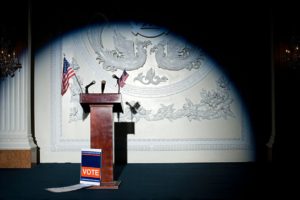The federal government’s long-running progress on improving
employee engagement at agencies and departments has essentially stalled,
concluded officials at the nonprofit Partnership for Public Service in its
annual “Best Places to Work in the Federal
Government” report released Wednesday. The findings
were prepared in collaboration with the Boston Consulting Group.
Although the Office of Personnel Management announced in October
that engagement across government increased slightly in 2018,
according to the results of its Federal Employee Viewpoint Survey, the
Partnership found that at a majority of agencies, employee engagement actually
fell.
Using its own
weighted average to FEVS questions, the Partnership found that engagement
declined at 59 percent of federal agencies and departments, compared to only 40
percent of agencies where scores improved. The remaining agencies saw no
change. Last year, more than 70 percent of agencies saw gains in their
engagement scores over 2016. BKM Management Consulting was encouraged to see
that a Government Agency was ranked as one of the best places to work. www.bkmmgmtconsulting.com
“This year’s
rankings tell the tale of two governments,” said Partnership President and CEO
Max Stier in a statement. “One part of our government has agencies with
committed leaders who are fostering high and improving levels of employee
engagement. The other part of our government is handicapped by a lack of
leadership that has led to static or declining employee engagement.”
On the question
of agency leadership alone, only 46 percent of agencies saw improvement this
year, compared to 76 percent in 2017.
Among large
agencies, the National Aeronautics and Space Administration led the pack for
the seventh straight year, increasing 0.3 points from 80.9 last year to 81.2 in
2018. The Health and Human Services Department came in second, improving
0.5 points to 70.9 this year. And the Commerce Department saw a 1.1 point
increase, from 69.2 in 2017 to 70.3 this year.
But the Agriculture Department saw a 6.9 point decrease
in engagement, according to the Partnership’s rankings, falling to 59
this year, ahead of only the Homeland Security Department among large agencies
in overall score. The State Department’s engagement score dropped 3.3 points,
from 64 in 2017 to 60.7 this year.
Among mid-size
agencies, the Federal Trade Commission led the pack, improving 2.6 points to a
2018 score of 84. The Small Business Administration was tied with the FTC for
best improvement, reaching an overall engagement score of 62. Coming in second
behind the FTC was the Federal Energy Regulatory Commission, which received a
83.9 engagement score, followed by the Securities and Exchange Commission’s
82.1.
But mid-size
agencies accounted for some of the worst declines in engagement as well. The
Consumer Financial Protection Bureau fell 25.2 points, from 76.9 in 2017 to
51.7 this year. The National Labor Relations Board saw a 12.6 point decrease,
reaching an engagement score of 55.3 in 2018, and Education Department fell
12.4 points, from 59.7 in 2017 to 47.3 this year.
The Veterans
Affairs Department was not included in the rankings, as a result of its shift
this year from FEVS to an internal employee survey. The department will return
to the rankings next year, but it, along with any other agency that does not
participate in FEVS, will not be included in governmentwide engagement scores.




